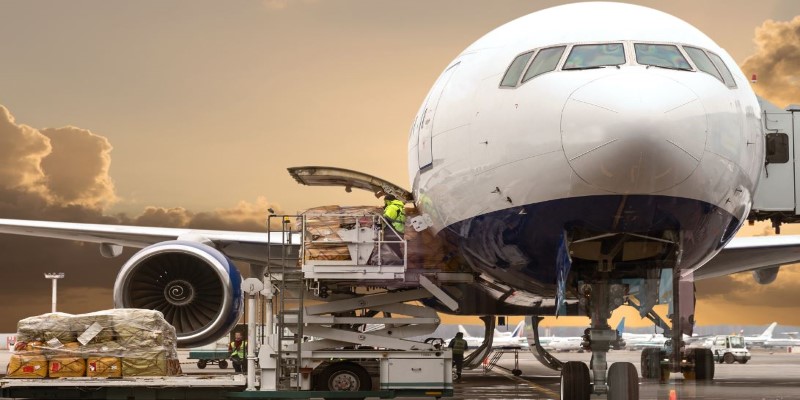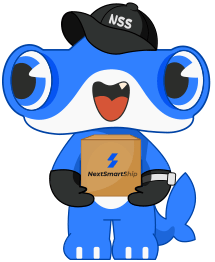The Ultimate Guide to Ecommerce Shipping
Ecommerce revolves around the promise that customers can buy products online and have them delivered to their homes. Consequently, reliable shipping is essential to the sustainability of any e-commerce brand. Regardless of the quality of your product, it must reach your customers quickly and safely, or they won’t appreciate your business at all – a scenario that will likely ruin your sales, customer engagement, and profitability.
The problem with eCommerce shipping it is complex and highly competitive. With companies like Amazon and Aliexpress offering premium shipping features at seemingly no cost to their customers, it is hard for small and medium-sized companies to satisfy their customers.
It’s not all bad news, though. With the right eCommerce shipping strategy, you can give customers the value they expect and make a profit at the same time.
This guide is the ultimate compilation of all you need to know about eCommerce shipping. With this knowledge, you’ll learn how to create an effective eCommerce shipping strategy that grows your brand.

Chapter 1: what is eCommerce shipping?
Ecommerce shipping refers to the collective strategies implemented by eCommerce retailers to deliver products to their customers. It is a vital part of any eCommerce operation.
The basics
Shipments
First, you need to know what constitutes a shipment. It may be one item or several, resulting from an order for multiple products from a single customer. A single customer order might also necessitate numerous shipments if it is a large item that can’t be shipped all at once.
Shipping management
Automated inventory management, mainly when your products are listed on multiple platforms, is an essential requirement. Shipping management software will help you stay organised. It will also monitor the status of all your orders in real-time.
Essential trends for the industry
Globalization
Ecommerce brands are moving away from localization, and have now embraced the world as their market. The demand for non-local products among consumers is only increasing. Over 2 billion consumers are expected to buy products online by 2021
Technology
The adoption of technology has enhanced revenues, efficiency, minimized errors, and enabled improved operational structure. Implementing software solutions such as automated shipping or chatbots can improve customer experience by allowing order tracking and similar services.
Multi-channel strategy
Relying on a single eCommerce platform like Amazon or eBay is gradually falling out of favor with online sellers. The new, more effective approach is to have a presence on several channels as this maximizes the chances of a sale.
Delivery optimization
Customers prefer short wait times and same-day delivery, so it is a growing trend among sellers. Surveys suggest that nearly 90% of all online buyers will pay more to have same-day delivery.
Customized packaging
Most eCommerce retailers are spending more on package design. Custom packaging improves the perceived value products offer, thereby strengthening brand perception and enhancing brand loyalty.
Chapter 2: Ecommerce shipping strategies
Ecommerce shipping is a multi-faceted process that requires several components to work. This chapter discusses all the available methods you may use to deliver products to your customers.
Couriers
Courier services are private firms that ship parcels and essential documents. The type of courier you choose depends on your shipping and delivery preferences.
Types of courier service
- Time-sensitive shipping
- Intelligent routing
- Onboard courier
- International shipping
Time-sensitive shipping
This service aims to deliver packages within a specific time. It is restricted to local deliveries and covers eCommerce delivery strategies such as same-day and next day delivery.
Intelligent routing
This approach considers geography, weather conditions, and several other factors to determine the most viable shipping routes.
Onboard courier
This service is ideal for personal items that require careful handling. The packages do not leave the courier’s sight.
International shipping
International shipping has to deal with delivery with a global view. That is, customers from different countries can have their orders delivered to them. However, these courier services are usually more expensive than standard mail services, but varies in pricing depending on the location and the speed at which it ought to be delivered for the duration of the shipping process.
Postal services
A postal service is a government-owned shipping company. Just like a courier service, it’s used to deliver essential documents and parcels. However, it is more susceptible to delays.
Differences between couriers and postal services
Price: postal services are less expensive than couriers. However, couriers are more reliable, and using their services guarantees your package will arrive on-time
Service quality: postal services offer limited customer service. Although some are more reliable than others, customer support is generally restricted. Couriers, on the other hand, have dedicated customer support structures.
Third-party shipping
Any successful eCommerce brand, no matter how large or small, must be ready to work with third parties. Unless you’re Amazon, it’s impossible to do it all.
Working with a reliable eCommerce shipping company grants you their hard-earned experience and expertise, and lets you focus on other vital parts of your business.
However, as a brand owner, you must realize that your customers’ perception of your brand can significantly affect your sales and make or break your business. Although you can have direct control over most facets of your customers’ experience, once you hand a package off for delivery, the larger part of what happens next is handed over to whichever company you handed your shipping process to. If the package arrives late, damaged, or worse, gets lost in transit, you probably won’t get any chance to impress. Consequently, you should do business with reliable third parties.
Same day delivery
Same-day delivery involves delivering items less than 24 hours after an order is confirmed and usually occurs within the same day. If the orders are processed in the afternoon, the items will be delivered at the start of the next day.
It is received usually limited to large urban centers. Shipments in these areas can be made in a single day as they’re often situated close to warehouses and distribution points. Small towns rarely have that kind of infrastructure, so quick deliveries aren’t possible.
Same-day delivery doesn’t work for holidays, as it would be hard to deliver orders made on New Year’s Day, Christmas and other holidays.
Overnight shipping
Overnight shipping is a delivery strategy in which customers are assured of delivery on the next business day. The term is often used synonymously with one-day shipping or next-day delivery. However, specific delivery dates are determined by the period in which the orders are placed.
Shipping carriers often have daily deadlines after which delivery for the next day is no longer feasible. Furthermore, depending on the shipping service and courier used, orders placed during the weekend may require an extra day.
Expedited shipping
Expedited shipping involves sending a parcel at a quicker pace than that offered by ground shipping. For most couriers, expedited shipping implies delivery at a faster rate than the usual.
International shipping
Statistics say that 70% of online buyers prefer to buy internationally. Shipping your products to the international market can give vital growth to your business. International shipping cannot be as fast as the domestic one. Expedited shipping usually takes 3-12 business days to reach the destination. Besides, custom processing may add a few extra days. For express service (DHL/FedEx/UPS), it takes about 3-7 business days from China to US.
Remember, shipments going to various states or across the country can still give expedited delivery. It needs the right planning and logistics. What is vital here is being reasonable with the timeline. For example, overnight or next day delivery might not be possible across the country.
Freight shipping
Freight shipping involves the transit of cargo via land, air, or sea. Any shipment whose dimensions exceeds 30x30x30 inches or weighs more than 150 pounds is categorised as freight. As a retailer, eCommerce shipping may help you receive inventory from your manufacturer or send products to fulfilment distributors or centres.
Chapter 3: Best methods for shipping from china to the U.S.
Cross-border ecommerce from china to the united states is a little known but highly beneficial niche. Unfortunately, most Chinese product suppliers lack the experience to make it work. Based on Nextsmartship extensive expertise, this chapter discusses the best shipping methods from China to the United States.

Airfreight
Airfreight is the fastest way to ship from china to the united states. It can also be costly. Freight rates vary between different forwarders, and the prices change regularly as well. For large shipment sizes and origin/destination pairs, ocean freight might be cheaper.
Sea freight
Ocean freight is the most cost-effective strategy for packages that weigh more than half a ton. It guarantees excellent economies of scale, considering that some vessels are capable of carrying 20,000 20-foot containers). Some freight forwarding companies also offer expedited freight as a premium service. Similar to air shipping, ocean shipping rates vary among different forwarders, and they change over time.
Shipping with Nextsmartship
If you choose to fulfil your orders with Nextsmartship, you’ll have all the choices to send directly to the united states. We’d like to talk about two of our logistics partners for shipping DTC packages here: China Post and DHL.
China post
China post, officially the China Post Group Corporation, is a state-owned enterprise that operates China’s postal service except for its special administrative regions, which have independent postal services.
China Post offers three shipping services:
- Airmail
- EUB (ePacket)
- Registered mail.
Benefits of china post
Shipping with. Epacket charges about $10 for each packet sent from china to the United States. Though shipping takes about 7 days, it is an ideal option if you’re looking to save money
Disadvantages
Shipping through china post can be slow. Though clearance takes between 1-2 days, it may extend to half a month in peak seasons.
Inadequate support: if you don’t have insurance for your merchandise, China post doesn’t issue compensation for lost or damaged packages.
DHL
DHL is an international shipping company with branches all across the world. It is fast and reliable
Advantages
If you need quick deliveries, DHL is the ideal solution for our brand. The company can deliver orders to the United States in as little as 3 Days
Exceptional service: if a package is lost, or its shipping fee is overstated, you qualify to get a full refund.
Disadvantages
DHL’s fees are about twice those charged by China Post. Furthermore, its shipping fees vary, and may suddenly change due to monthly fuel surcharges.
Chapter 4: Shipping fulfilment in the U.S. Vs. Shipping fulfilment in China.
There are two basic approaches to order fulfilment: fulfilling orders from the United States, or from a fulfilment centre in China. This section examines both to help you choose the best option for your brand.
Shipping fulfilment in the United States
When you fulfil orders to US customers from fulfil centers in the United States, your orders are kept in a US-based fulfilment centre, so the entire order fulfilment process occurs within the country
Benefits
Fast shipping: this is particularly advantageous during peak seasons like Black Friday. If your inventory is in the United States, you can make deliveries on the same day that the orders are made.
Easy returns and restocking process: it’s easier for customers to return or exchange items they aren’t satisfied with. Increased efficiency will not only put you in their favour but also reduce losses and shipping costs.
Convenient market expansion: if you’re selling on Amazon, the fact that your orders are fulfilled from a local warehouse will push you ahead of other sellers whose products are shipped from abroad.
Disadvantages
Cost: overseas warehousing costs more than it does in China. If you don’t sell your inventory in about one month, storage costs will increase dramatically.
Reduced flexibility: if your inventory is sensitive to quick fashion trends, it may be unwise to move inventory to the U.S., especially if you have a low turnaround rate.
Shipping fulfilment in China
Fulfilling orders in china involves sending your inventory to a China fulfilment centre. With this option, sorting, inspection, picking and packing occur before items are shipped to the united states.
Benefits
Inexpensive: the rate for shipping a single standard-size item is lower than it is for orders fulfilled in the united states.
Reduced taxes: industrial goods whose value exceeds $800 pay a tariff rate of 2.0 upon entry into the united states. If you choose to fulfil your inventory in china, the tax won’t be applicable.
Disadvantages
Variable shipping time. Shipments are heavily affected by weather conditions, and any delay, even when it caused by bad weather, may not sit well with your customers.
Which strategy is best for you?
If you sell large items, it’s wise to use a fulfilment centre close to your customers. If you sell standard sized products and ship less than 300 orders each month, fulfilment from china is a better strategy.
Chapter 5: Choosing a shipping policy
Shipping policy is a comprehensive document that outlines your shipping process. It covers all facets of your shipping operations and includes shipping locations, your policy for free shipping (if relevant), shipping options, costs, and so on. Your shipping policy helps customers understand the nature of your business, and it can serve as a valuable point of reference should any disputes arise.
Why you need a shipping policy
Increased efficiency
Your shipping policy will spare your enterprise lots of time and finances. If your customers don’t have enough information on how you handle shipping, they will likely overwhelm your support team with questions about delays, shipping costs, etc. A comprehensive guide on how you run your shipping will answer customers’ queries, saving you time and other resources.
Cost savings
Shipping policy has a significant effect on sales. If, for instance, you offer international shipping, your business may be harder to manage, but it will expand to overseas markets and generate increased revenues. Conversely, local shipping may be easy to manage, but it will limit your growth potential to a single country. A clear shipping policy will keep your customers happy and satisfied and help you maximize your sales.
Tips for an effective shipping policy
Pay close attention to detail. Unclear wording will force your customers to make assumptions, and you don’t want that to happen because it means you’re likely to disappoint.
Be honest. If you know a particular delivery option takes about 3 days but may extend to 5, don’t say 3. Your customers expect you to be reliable. If you break their trust, it’ll be hard to win back.
Be organized. Have an overview of your policy along with a detailed explanation for each section. Customers like to have information at their fingertips. Short summaries that list all the main points in your document will improve their experience.
Chapter 6: Shipment tracking
Order tracking allows you to follow all your orders and shipments and to relay this information to the relevant parties at any time. It readily provides answers to questions such as order fulfillment dates, estimated delivery time, delivery addresses, and potential delays.
Benefits
Convenience
Without an order tracking system, you, the vendor, will have no choice but manually handle customer inquiries. This is a lot more expensive than order tracking, which automatically answers the most pertinent questions customers have on their minds.
Customer satisfaction
Automated order tracking improves your brand image, positioning you as a reliable, trustworthy merchant. Customers like it when they receive updates on their orders. So, if you have an order management system, they are more likely to buy from you and leave you positive reviews. Ecommerce competition is incredibly fierce. Adding an eCommerce order tracking system will give you an advantage over your competition.
Control over the order fulfillment process
Order tracking allows you to follow the status of all your orders and to anticipate problems before they occur. With the information from your system, you can quickly find solutions to problems and avoid customer disputes.
![]()
Tips on setting up eCommerce fulfillment
Dedicated pages
Before you add any form of order tracking to your eCommerce store, you should create pages on your site for each step of the order tracking process. There should be pages for shipping, returns, orders, and confirmation. It also helps to have a printable receipt as this will help you establish legitimacy and trust with your customers.
Email notifications
Email can deliver thank you messages, tracking numbers, and more. It is one of the most trusted and reliable forms of communication for millions of users worldwide. It gives customers a sense of privacy, control, and belonging, so it is an ideal channel for customer communications.
Besides order tracking, emails can deliver product promotions, and newsletters, thus improving customer engagement.
Chapter 7: How to reduce shipping costs
Shipping rates are a complex subject. With skyrocketing demand and volatile carrier fees, it’s becoming increasingly difficult for small business owners to maintain reasonable profit margins. The good news, however, is that there are ways around the problem.
Use professional packaging
Packaging is meant to protect your products during transit and improve the perception of your products. However, if it’s not done the right way, it will increase your shipping costs.
How packaging affects shipping costs
Many shipping companies use excessive amounts of protective packaging. While it is done with good intentions (to limit the risk of damage in transit) it can substantially affect your shipping fees. A few extra layers of bubble wrap may take your package from a gross weight of 1.1lb to 2lb, thereby increasing your cost. Hiring a professional packaging service will help you avoid this problem.
Don’t waste space – choose the smallest possible packaging size for your product. Don’t use large boxes for small packages unless it is absolutely necessary. A cardboard box may not weigh much, but it will increase your package’s volumetric weight and potentially increase shipping costs.
Reduce volumetric weight
Volumetric weight is a shipping metric that combines a package’s weight and size. It presents density, volume, and weight as a single measurement that package handlers use to determine shipping prices.
An item’s actual weight can significantly influence its shipping cost. For instance, a 1-kg gold brick is easy to store and transport. It doesn’t need special handling; it doesn’t also doesn’t take up much space and is sufficiently dense. On the other hand, a 1-kg painting may be 3 meters long. Though it’s the same weight as a gold brick, it requires a lot more effort to handle and store, and it will have a higher volumetric weight.
Have multiple items packed into a single box. Items placed in a single package will take up less space (volume) than items packaged individually.
Chapter 8: Why you need shipping insurance
Shipping insurance is a service that compensates customers whose orders are stolen, lost, or damaged in transit. Since there is always the chance something may go wrong, it’s wise to ensure your parcels as this will protect you from compensatory claims should something go amiss. Besides this, there are several other benefits:
Peace of mind
Shipping insurance can offer peace of mind by eliminating any worries over lost, missing or damaged items. Since your insurance agent will handle compensation, there’s no need for concern if anything goes wrong.
Reduced burden
Package insurance will streamline your operations and reduce the amount of paperwork you have to process. It will save you time, money, and other resources.
Customer satisfaction
Shipping insurance offers customers greater satisfaction. In fact, they are more likely to purchase your products if they’re insured.
Shipping insurance options
United States Postal Service (USPS) shipping insurance
USPS insurance offers a standard insurance policy that protects your items against damage, loss, and missing content. The insurance will only cover the actual value of the shipped items.
United Parcel Service (UPS) Insurance
With UPS insurance, the provider reimburses the full value of a lost or damaged item whether or not the shipper can prove that the carrier is liable. Note: UPS insurance does not cover loss resulting from improper packaging, prepaid letters, and acts of God such as adverse weather conditions and natural disasters.
FedEx Insurance
FedEx insurance provides standard declared value coverage. Consequently, each package’s liability is limited to USD 100 unless a higher value is declared and the subsequent fees paid.
Fedex liability for delicate items and other items whose market value is hard to verify is limited to $1000, and you may not be allowed to declare a higher value for such items. Note: like UPS, FedEx insurance does not protect your parcels against acts of God, or packages damaged or lost after they arrive at the customer’s doorstep.
Chapter 9: Shipping strategies that improve sales
According to a study by the National Retail Federation, 66% of shoppers consider free shipping a vital aspect of their online experience. It stands to reason, therefore, that adding it to your marketing plan will greatly benefit your brand.
Why you should offer free shipping
- Better sales and revenues
- Free shipping will surely boost your sales and bring in new conversions. It has grown remarkably popular in the eCommerce world, and it will help you avoid the common customer perception that you are forcing them to pay for a service they would get free at large shopping platforms like amazon.
- Enhanced brand loyalty
- Besides attracting new customers, free shipping will help you win loyalty. Some studies have reported that over half of all consumers stay loyal to shops after they receive free shipping offers. This shows that it helps brands establish strong relationships with their customers, and increases the chances that they will become repeat buyers
- Higher order values
- Shoppers are likely to buy more items than they need just to meet the minimum requirements for free shipping. Consequently, it is a strategy that can significantly improve your average order sizes.
Tips on how to successfully offer free shipping
- Hire a third-party fulfillment partner
- Shipping can be a complex and challenging operation, more so if it involves overseas fulfilment. Fulfilment companies will help you reduce expenses and deliver products faster to your customers.
- Improve your packaging
- Packaging has a significant effect on the order cost. Improper packaging will increase the packages’ volumetric weights, thereby increasing your costs.
- Choose profitable free-shipping options
- Don’t be afraid to set conditions customers must meet before they qualify for free shipping. — for instance, you may set a minimum order value for free deliveries or offer free international shipping, provided that customers order high-value products. It may seem complicated and scary, but with the right strategy, free shipping will dramatically boost your sales, improve your profit margins and increase customer loyalty to your brand.
Chapter 10: When You Need Freight Shipping in Ecommerce
Freight shipping is a third-party service that involves the transportation of a large quantity of merchandise via ship, intermodal transport, road or air, and like eCommerce shipping, it is an integral part of supply chain management. Freight shipping differs from e-commerce shipping in the sense that it’s for items that exceed 30in x 30in x 30 in or weigh more than 150 pounds.
Benefits of freight shipping
Freight shipping enables you to get your merchandise to its destination on time and at a relatively low cost. Whether it’s by road, air, rail, or sea, freight shipping confers several benefits.
Carrier experience
If you need to transport heavy, high-value merchandise, then freight shipping is the ideal solution. It allows you to partner with professional carriers who can guarantee your cargo’s safety.
Inexpensive rates
Freight shipping offers economies of scale. Freight transporters maintain a highly specialized workforce so their employees will handle your merchandise with greater efficiency than an in-house team.
Freight shipping methods
Less than truckload
Meant for shipments larger than parcels but too small to fill an entire truckload trailer, LTL shipping is suitable for consignments that weigh between 150 and 15,000 pounds.
Full truckload
Full truckloads are pallets large enough to require the use of semi-trailer, and they usually weigh larger than 15000pounds. Since the merchandise fills the entire trailer, they are relatively inexpensive, and there is little risk that cargo will be damaged in transit.
Partial truckload
Partial truckloads allow multiple shippers to split the cost of a single truck. They are a cost-efficient way to ship small consignments.
Intermodal shipping
This approach typically combines two transport modes (rail and road), and may at times extend to three. It is fuel-efficient and reliable.
Expedited freight
Expedited freight is used for urgent shipments. It’s limited to road or air freight. Delivery times last between 24 hours and 3 days, depending on carrier policy.
Conclusion
Ecommerce shipping can be a daunting task for any eCommerce brand. Each business will have specific challenges to tackle and overcome to optimise its shipping strategy. Like most aspects of building an eCommerce business, it will take time and careful evaluation to identify the best approach.
Understanding all the aspects of your shipping strategy is critical to your long-term performance and profitability. For this reason, even when you feel you have understood everything, don’t rest. Revaluate your position at least twice a year to ensure you keep offering your customers the most competitive and convenient service.
If you prefer a professional third-party logistics company’s support and expertise, Nextsmartship offers a range of custom solutions that will perfectly fit your brand. Regardless of the options you choose, you will have:
- 100% Transparent Pricing
- 9% Order Fulfilment Accuracy
- 40%+ Savings on Fulfilment Costs
- 10+ Years of Experience at your disposal




